Editor’s Note: Dr. Tichavsky uses the term Holon which refers to the total environment the plant grows in, including other plants, animals, microorganisms, insects and the climate.
Also: JT potency (Jenichen / Tichavsky) is a centesimal dilution followed by 500 succussions or five hundred continuous turns with a wooden stick to the right and 500 turns to the left (if handling larger volumes). The JT potency frequently has a better reaction in plants and it is very important in preparation of live bionosodes.
Hello Radko,
I sent you a photo last year (2022) of my lilac tree. Most of the flowers were brown, even as they first emerged. I mixed the homeopathic Aloe with water and sprinkled it around the tree. It’s 2023 and it’s blooming now! Thank you SO MUCH for making my lilac tree beautiful again!
Linda Santini
Dr. Radko Tichavsky:
Dear Linda,
I am glad that you managed to restore the vitality of this emblematic plant and you can enjoy again the beauty of its flower.
Hi Dr. Tichavsky,
We live in Forsyth, Georgia – zipcode 31029. The climate is subtropical, with hot humid summers and mild winters. Temperatures range from the mid-80s during the summer to the mid-40s during the winter. Georgia gets 47 inches of rain, on average, per year.
Our Cyprus trees are sick… many trees all over Georgia are sick and being cut down. The brown dead spots are spreading. It might be Seiridium canker, but I’m not sure. . I tried Sulphur 30c… any recommendations?
Thank you
Sylvia
Dr. Radko Tichavsky
Dear Sylvia,
In my opinion it could be Seridium sp., Pestalotiopsis sp. or Diplodia sp-, diseases popularly known as cankers on Cupressus macrocarpa, Cupressus sempervirens and other pinaceous species.
Environmental conditions such as high humidity, frequent rains and warm temperatures, prolonged droughts favor the development of cankers in cypresses by creating stress in the plants and an environment conducive to the growth of pathogens.
Monoterpenes (in essential oil of Thymus vulgaris and Piper nigrum), sabinene hydrate (in essential oil of Mentha spicata), camphor (in essential oil of Salvia officinalis and Tanacetum parthenium or Rosmarinus officinalis) and α-terpineol (in essential oil of Melaleuca alternifolia) are the metabolites that help control cankers in Cupressus. The homeopathic preparations are used alternately at 4 JT potency to prevent fungal adaptation to the remedies. In addition, Camphora 4 JT is used, alternated with live Aloe vera gel bionosode at 4 JT potency.
Dear Dr. Tichavsky,
Any suggestions on how to treat Phytophthora fragariae on strawberry roots? I live Cedar Key, Florida ( Zip 32625). Summers tend to be hot and humid, with temperatures reaching an average of around 87 degrees Fahrenheit during the day, while nights are usually much cooler. Winters, on the other hand, are mild and relatively dry. Cedar Key gets 56 inches of rain, on average, per year.
Thank you
Harry Wilson
Dr. Radko Tichavsky:
Dear Harry, to control Phytophthora fragariae you can apply pine essential oil at 4 JT potency or homeopathic preparation of pine resin (prepared from TM in alcohol, emulsified in water, and dynamized at 4 JT potency) and apply both remedies foliarly. You can add the application of Borax 6 CH (with caution, only once or twice during the year), and keep the soil with acid pH to favor the growth of strawberries.
Dear Dr. Tichavsky,
Regarding Lichens, you wrote “As a prophylactic and preventive measure, you can apply Thuja occidentalis 6 CH spread on the trunk, and add Salix babylonica 4 JT to the irrigation once a month.”
I don’t understand why you advised Thuja since you said lichens aren’t a problem.
Many thanks.
Jacqueline Kelly
Dr. Radko Tichavsky:
Dear Jackeline,
In short:
The lemon trees in this case actively attracted the collaboration of the lichens by emitting a metabolic distress signal, but although the lichen may partially help protect the plant, it is not vascularly connected to it, so “internal” remedies are required to build and reinforce the plant’s resistance and resilience to adverse conditions and help it improve its vitality.
Further in-depth explanation follows:
The selection of Thuja occidentalis corresponds to holohomeopathic repertorization in this case. We do not use the “logic” of analogy or extrapolation repertorization based on human repertoires and applied in plants. Treating pests and diseases is mostly an allopathic principle. “Treat the plant not the pest” is the first rung in the logical progression to “treat the holon not the plant” of the holohomeopaths.
To explain and repertorize correctly herbal homeopathic remedies on plants, one must know the metabolites of each plant. For example, an antropocentrical agrohomeopathy focus suggest for example, that the symptoms of “redness with thirst” in plants are correlative to the same symptoms in humans, which allegedly indicate the use of the same Belladonna remedy in all plants. This may be valid for some plant species, but not at all for others.
This is because atropine, scopolamine and hyoscyamine, the alkaloids of Atropa belladonna (known in homeopathy as Belladonna), are not only antifungal, but are also strongly allelopathic to potato, corn, tomato and lettuce crops for example, inhibiting seed germination and growth of these plants.
Although they may also exhibit symptoms of “thirst and flushing” which for the anthropocentric agrohomeopaths would undoubtedly indicate Belladonna, the effect would be negative. Atropa belladonna alkaloids affect also the activity of acetylcholine receptors in insects and other plant-feeding organisms, which can lead to appetite inhibition, growth reduction or even death of the organism, but they also attract and benefit other insects that by feeding on the plant become toxic to their predators.
In other words, in homeopathic remedies of plant and animal origin there are no general therapeutic indications for all plants, but only specific remedies for each plant species. This is why the holohomeopathic method bases the repertorization for plants on holon characteristics, and on the metabolic similarity of the different plants used in the applications on the target plants.
First, quantitative analysis is performed to determine how many and which metabolites are common between the remedy plant and the target plant.
In this case Thuja occidentalis shares 5 metabolites, and Salix babylonica shares 4 metabolites in common with Citrus limon, which is relatively few, but both plants contain important complementary metabolites, antioxidants and related to the systemic resistance of Citrus limon to climatic changes and its adaptation.
Subsequently, we performed the qualitative repertorization where we took into account the complementarity of the metabolites, their names, function, their quantity, expression in the different anatomical parts of the plants and their usefulness for the performance of the target plant, in this case in Citrus limon.
The symptomatology presented in your lemons trees is basically related to the maladaptation to conditions of high solar radiation and dehydration.
Considering that lemon is not native to Australia, even if the grower can partially fix the irrigation conditions, the other biotic and abiotic stressful conditions such as too high temperature, low air humidity, salinity or high incidence of UV rays can hardly be controlled, as well as the collaboration of the plant with micro meso- and macro-organisms native to Australia, other than the organisms that co-evolved with lemon at its point of origin.
The lemon trees in this case actively attracted the collaboration of the lichens by emitting a metabolic distress signal, but although the lichen may partially help protect the plant, it is not vascularly connected to it, so “internal” remedies are required to build and reinforce the plant’s resistance and resilience to adverse conditions and help it improve its vitality.
After application of Salix and Thuja, the lichen may remain and/or may eventually lightly diminish, but this is not the objective of homeopathic intervention in this case, we are rather trying to reinforce the response of the plant and its microbiota to the unfavorable conditions of the site.
For example, in Thuja occidentalis we find thujone, which helps to resolve oxidative stress produced by drought, fenchone, another alkaloid reduces levels of reactive oxygen species and protects against oxidative damage applied on lemon, polysaccharides have a similar function and alpha-pinene and limonene trigger the systemic response to water stress and other adaptive responses in lemon.
Although Thuya occidentalis exhibits moderate antibacterial, antifungal and antiviral activity, its antioxidative and systemic water stress resistance-inducing capacity in lemon stands out.
Salix babylonica on the other hand contains salicylic acid, salicin, polyphenols and protoanthocyanidins that increase the resilience of Citrus limon to conditions of high temperature and water stress.
In summary, agrohomeopathy deriving its therapeutic conclusions by extrapolation and analogy from human medical repertoires and materials was historically important as a means to attract the attention of the general public to the possibility of applying homeopathy in agriculture, but by generalizing the antifungal use of one herbal remedy as being useful in all plants, or by affirming that for example Arnica is healing infections in humans so it is a healing the same like polychrest applicable to all plants, or that “thirsty plants with red dots” indicate for all the plants Belladonna, they fall into oversimplification, and untenable error from the scientific point of view, and recommendation of remedies useless for professional agriculture.
This is the challenge of holohomeopathy, not only to change the perception of agricultural homeopathic repertorization, which is seen by science as a method under anthropocentric logic of little scientific validation, but to move the way of reasoning and thinking of agrohomeopaths to holistic or systemic thinking.
The challenge is to propose and practice a method of homeopathic repertorization based on evidence, understanding of plant metabolism, understanding its complex conjunction and collaboration with micro meso and macro organisms based on metabolic similarity, but above all, to ensure reliable results for the farmer.
Dear Dr Tichavsky,
Could you please advise a solution for some unwanted visitors we have in the garden. This spring we have been visited by both wild boar and deer. The boar have created huge holes in the orchard and the deer have damaged some of our young apple trees. I have seen in some previous posts you suggested Fox urine, would this be a suitable remedy? Could we also use human urine as an alternative? What potency do you recommend? I make a Potassium soft soap made with olive oil, would this be a suitable adjuvant?
The second unwanted visitor is the Bracken (Pteridium), when we plant a new section of vineyard, the Bracken seems to establish very quickly and I have trouble controlling this species. Can you please suggest a remedy for slowing the growth of this?
I also have another question about the care of the vineyard. I have seen in a previous post that you suggest an Oak bark inoculum. Could you please expand on that concept? Do we take the bark of various species of Quercus, and simply soak this in water, for say 24 hours, and then spray on the crop? Would this best be sprayed with an adjuvant, say of aloe or optuna?
Thank you
David Haysom
Dr. Radko Tichavsky:
Dear David,
For control of wild pigs and deer use 4 JT wolf urine and as an adjuvant you can use lavender or peppermint oil emulsion (or both together) in water added to the wolf urine prepared at the 4 JT potency.
As for the control of Pteridium aquilinum, it is often reported as an infesting weed. The plant is a bioindicator of climatic changes and its control is difficult due to the abundance of rhizomes developed in deep soil layers. Research on its control is just in progress, but there are some advances.
Another characteristic of the organic matter produced by Pteridium aquilinum is an extremely slow rate (up to 11 years) which causes an accumulation of organic matter without decomposing and helps the growth of new rhizomes of the fern.
The two main weapons of P. aquilinum are two phenolic substances: cinnamic acid and ferulic acid, both are phenolic substances synthesized in plants from phenylalanine, and both are strong herbicides that significantly inhibit other plants around Pteridium aquilinum.
But the fern also has important ecological indications in the holon and in fact, its presence bioindicates soils with too much acidity and under intense degradation process in the soil (for example due to agricultural burning and other deforestation management). It also indicates the presence of heavy metals in the soil (e.g. cadmium).
Natural inhibitors of phenylalanine (precursor of herbicides produced by Pteridium aquilinum) are salicylic acid (present for example in the bark of Salix babylonica), ellagic acid (in the leaves of Fragaria vesta, in the fruit testa of Juglands regia or in the bark of Psidium guajava) and vanillic acid (in the leaves and seeds of Coriadrum sativum).
First suggestion for any Pteridium aquilinum limitation treatment to be effective is that it must be accompanied by at least two cuttings of the aerial part of the plant, where the frond of the plant is left on the soil surface and the homeopathic applications are always applied immediately after the cutting on the soil and on the remains of the plants. In this way the pH of the soil is modified from acidic to more alkaline.
Ganoderma applanatum 4 JT, or Ganoderma lucidum 4 JT or Trametes versicolor 4 JT should be applied after each cutting. These homeopathic remedies aid in the rapid decomposition and availability of nutrients in the soil by providing food for soil organisms such as millipedes (omnivores and detritivores) and earthworms that decompose fern leaves and rhizomes.
Once signs of decomposition of the Pteridium aquilinum foliage are noticed on the soil, then apply Salix babylonica 4 JT (made from the bark of the tree) and Fragaria vesca (made from the leaves) 4 JT, this will free the space governed by Pteridium aquiline and allow the germination of competitive native species.
It requires that the process of control of Pteridium aquilinum in the holon may take several years, until the fern rhizomes are exhausted and allow the reestablishment of native flora and renew fertility in the soil.
The reason for the beneficial interaction of Quercus app. bark and berry applications on grape crops is the attraction of mycorrhizal fungi (specifically ectomycorrhizal fungi) that help protect the plant from fungal and bacterial diseases.
It is interesting to know that mycorhizic fungi such as Glomus spp., Paraglomus spp., Scutelospora spp., Acaulospora spp. and Sclerocystis spp. are generally present in the root system of Quercus spp. but also in some xerophytic plants such as cacti and succulents.
The usefulness and availability of these fungi may vary depending on each holon as well as their interaction with bacteria of the phylum Firmicutes (e.g. abundant in Aloe vera).
Glomus spp. are widely recommended by the industry but the truth is that most of this family is relatively resistant to hot conditions. Scutelospora and Acaulospora are more resistant to global warming.
The same happens with Bacillus spp., the industry is using Bacillus subtilis for example, since most of the strains of this microorganism sporulate above 30 degrees Celsius and become quickly inactivated.
But for example, Bacillus licheniformis has a really fantastic heat resistance and also knows how to collaborate with mycorrhizae. The best combinations can be found in the root system of some native plants in your holon, resistant to heat and desertification. And of course, it depends a lot on where your holon is located.
Greetings Dr. Tichavsky,
I am growing elderberry and it is doing poorly. We had a recent soil analysis done that says we are low in Sulphur and Boron. Can you suggest how to correct this? I have about an acre of this in our organic orchard. I live in Mountain View Arkansas (U.S.). We have hot summers and cool winters. Mountain View is known for its sunny skies and low humidity. We get around 49 inches of rain a year.
Thanks!
Marvin
Radko Tichavsky:
Dear Marvin,
Nutrient deficiency tests in the soil or in the plants sometimes leads to the false idea that supplements with such elements should be applied to solve the deficiency. But in fact, by supplementing the holon with Sulphur and Boron, the deficiencies are only temporarily solved, deepening the inability of the holon to restore the balance without external inputs and producing what we know as sequential deficiencies, i.e. sulfur deficiency produces other secondary deficiencies, derived from the first as deficiency of phosphorus, nitrogen, magnesium, and Boron deficiency produces imbalances in Phosphorus, Nitrogen, Calcium, Iron.
Some symptoms developed in Sambucus spp. plants by fungi Cytospora sp., Diplodia sp.,Nectria sp., Neonectria sp.,Sphaeropsis sp. and especially by Heterophoma sp., a fungus whose symptomatology can be confused with the effect of nutritional deficiencies. It is an emerging disease in commercial elderberry crops, especially in those established from plants acquired in nurseries.
The control strategy consists in the application of bacteria of the Firmicutes family, specifically Bacillus subtilis, Bacillus licheniformis and Bacillus amyloliquefasciens. You can apply live bionosode from roots of Bougainvillea sp. or Hedera helix and live bionosode from roots of Fragaria vesca and/or Aloe vera all at 4 JT potency.
Bacteria of the Bacillus spp. family of live bionosode is applied as a foliar spray. They occupy the space on the leaves and do not allow pathogenic fungi to attack the trunk and leaves of the plants.
Arbuscular mycorrhizal fungi (AMF) naturally exist in the soil and form a mutualistic symbiosis with plant roots and help the trees in the availability and absorption of Sulfur, Phosphorus and Boron.
You should look for plants mycorhizized with arbuscular mycorhizal fungi (AMF) of the Glomus, Rhizophagus, and Funneliformis families at the nursery, since inoculation of these mycorhizal fungi is best established from seedlings.
If you can get plants produced from seed, and not from asexual reproduction, it is much better. AMF fungi symbiotize very well with bacteria of the Bacillus family.
Dear Dr. Tichavsky,
Last year we had Corn Rust in the crop. We’re in Riverton, Cherokee County, Kansas (U.S.) (zipcode 66770. Annual rainfall is from 30 – 40 inches. Temperatures range from -1.6°C in January to 26°C in July. Is there a holistic approach to this?
Thank you
Gregory
Radko Tichavsky:
Dear Gregory,
To control corn rust, caused by Puccinia sorghi, you can apply Cinnamomum verum essential oil at 4 JT potency, Equisetum arvense 4 JT or Aloe vera 4 JT.
Dear Dr. Tichavsky,
I am writing to you about a potted Euphorbia pulcherrima which has leaves penetrated by whitefly larvae. I have done a treatment with Piper nigrum 3JT and I am thinking of alternating with Calcium Carbonicum 6CH. Also, many forget that Euphorbia pulcherrima (“Christmas Star”) is a beautiful Mexico Tree (especially, in Mexico) and I would like to know the specific constitutional remedy of its holon.
Thank you
Roberto Migliorelli
Radko Tichavsky
Dear Roberto,
You can add Cina 12 CH,
best regards and a hug.
BOOKS ON HOLOHOMEOPATHY
Many readers asked about Dr. Radko Tichavsky’s books. Below is a photo of them. They are available in Spanish, Italian and Portuguese. For ordering or information: [email protected]
New Video from Dr. Radko Tichavsky!
In this video, renowned Agrohomeopath Dr. Radko Tichavsky explains Holohomeopathy, the more advanced method of agrohomeopathy: https://youtu.be/GUUoO6Lt-U8 (English subtitles)

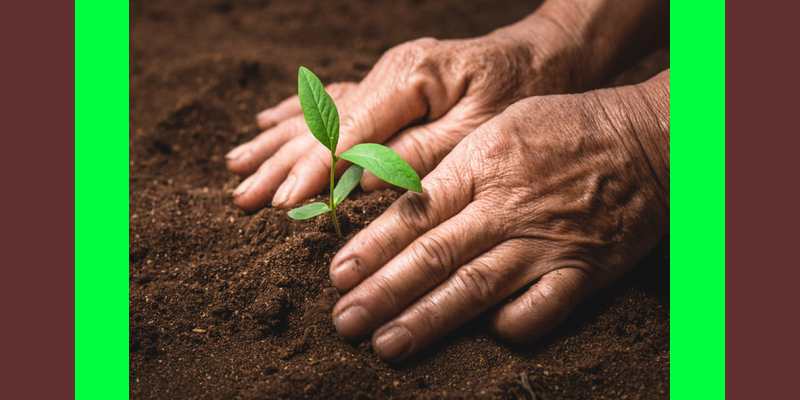

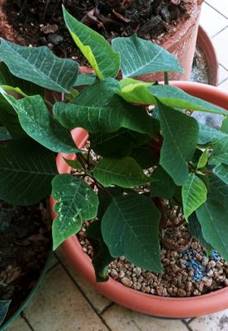
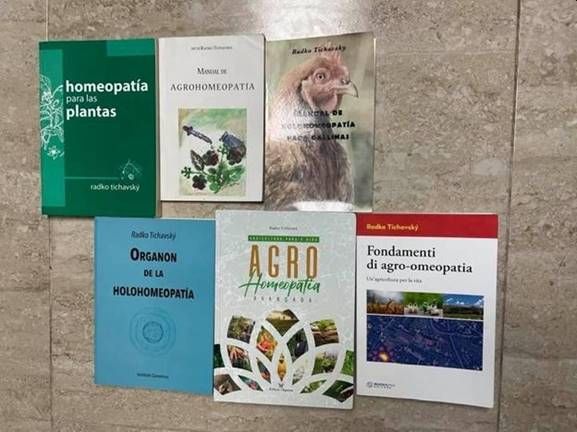
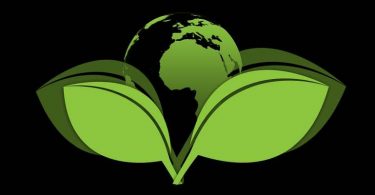
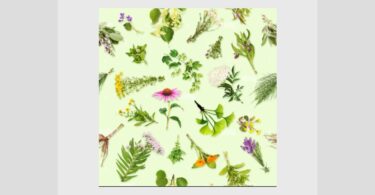
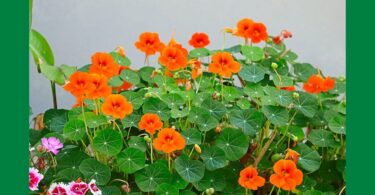

Dear Dr. Tichavsky,
I can see, that Equisetum arvense can be used as a remedy, but it is also an almost invasive plant here in Denmark, North Europe. If it is in a garden, it is really hard to manage and takes over larger areas. Is it a indicator of some imballance? I will appriciate your comment, thank you.
Jeanette
Ciao Radko grande maestro, volevo chiederti se è veramente necessario sterilizzare le trebbie che derivano dalla produzione delle birra che io vorrei destinare alla produzione di funghi, se si, quale rimedio potrei usare?